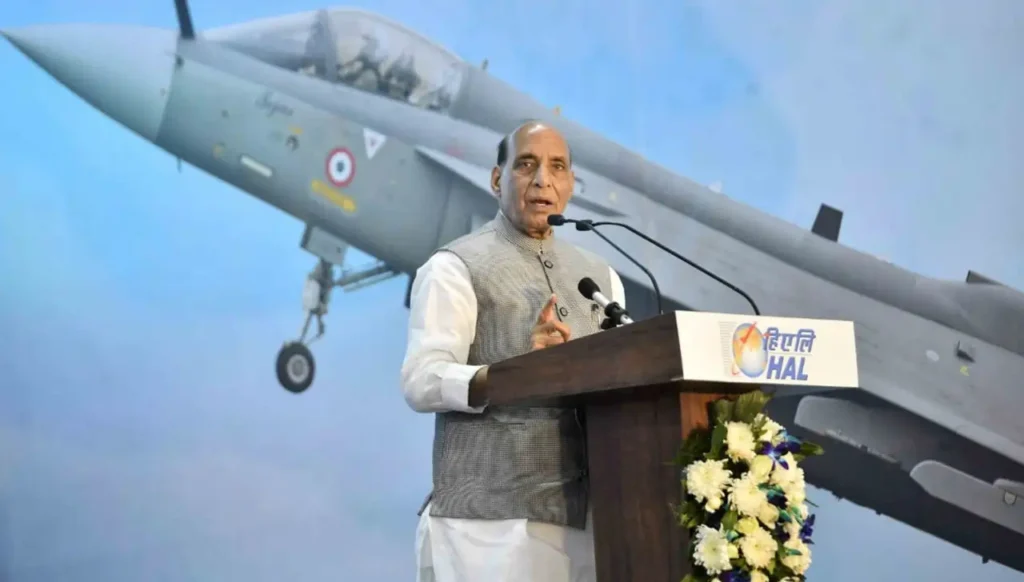New Delhi: India’s defence theaterisation plan represents a monumental shift in its military framework, aiming to integrate the Army, Navy, and Air Force into unified geographical commands. As the nation confronts complex security challenges from neighbors like China and Pakistan, this reform seeks to enhance operational synergy and modernize India’s defence capabilities. Discussions at Ran Samwad 2025 revealed differing perspectives within the defence leadership, highlighting the intricacies of this ambitious restructuring. Spearheaded by the Chief of Defence Staff (CDS) under the Department of Military Affairs (DMA), the plan targets completion by the end of 2025, promising to reshape India’s military into a cohesive, multi-domain force.

Understanding Theaterisation
Theaterisation entails consolidating the resources of India’s Army, Navy, and Air Force into specific geographical commands, each led by a single commander. This initiative marks India’s most significant military reform since Independence, moving away from the current structure of 17 service-specific commands—seven each for the Army and Air Force, three for the Navy, plus the tri-service Andaman & Nicobar Command and Strategic Forces Command. By fostering jointness, theaterisation aims to optimize resource utilization, streamline decision-making, and enhance combat readiness for modern, multi-domain warfare involving land, sea, air, cyber, space, drones, and precision weapons.
The CDS, leading the DMA, is mandated to establish these joint or theatre commands, ensuring a unified approach to counter evolving security threats effectively.
Key Challenges in Implementation
The path to theaterisation is fraught with challenges:
- Indian Air Force Concerns: The Air Force, with only 30-32 fighter squadrons against a sanctioned strength of 42, fears that dividing its limited assets among commands would compromise its strategic flexibility and core doctrine, which emphasizes air power’s indivisibility.
- Need for an India-Specific Model: Experts stress that India must avoid blindly adopting foreign models, like that of the US, and instead tailor theaterisation to its unique geopolitical threats and resource constraints.
- Structural Disruptions: Dismantling decades-old command structures could temporarily impair combat readiness during the transition.
- Command and Domain Expertise: Questions arise about whether a theatre commander from one service can effectively manage and understand the intricacies of another service’s assets, particularly air power.
- Financial and Industrial Concerns: The high costs of theaterisation raise skepticism about returns, especially given India’s limited domestic military-industrial base.
Leadership Perspectives at Ran Samwad 2025
A tri-service seminar on September 8, 2025, at the Army War College in Dr Ambedkar Nagar (Mhow), Madhya Pradesh, highlighted diverse viewpoints within India’s defence leadership. Air Chief Marshal A P Singh advocated a cautious approach, proposing a joint planning and coordination centre under the Chiefs of Staff Committee in Delhi to enhance jointness without immediate structural upheaval. In contrast, Admiral Dinesh Kumar Tripathi expressed the Navy’s full commitment to integrating its communications, command, and combat systems with other services to support theaterisation. CDS General Anil Chauhan reassured stakeholders that inter-service differences would be addressed, emphasizing his role in driving these reforms forward.
Current Command Structure
India’s military currently operates with 17 service-specific commands: seven each for the Army and Air Force, three for the Navy, and two tri-service commands—the Andaman & Nicobar Command and Strategic Forces Command. The Headquarters Integrated Defence Staff (HQ IDS), established after the Kargil War, lays the groundwork for higher defence reforms by facilitating coordination in procurement, training, and joint doctrines.
Why Theaterisation is Critical
The changing nature of warfare, encompassing cyber, space, drones, and precision weapons alongside traditional domains, demands integrated operations. Theaterisation enables better coordination of assets, ensuring India’s forces operate as a unified entity rather than in isolated silos. Drawing inspiration from advanced militaries like the US and China, this reform aligns with global best practices, enhancing India’s ability to counter complex threats efficiently.
Supporting Measures for Jointness
To bolster theaterisation, India is pursuing parallel initiatives:
- Cross-Posting of Officers: Assigning officers across services to build familiarity and strengthen inter-service coordination.
- Joint Logistics Nodes: Establishing logistics hubs that serve all three services to reduce duplication and enhance efficiency.
- Unified Procurement and Training: Implementing common planning for procurement, training, and staffing to promote synergy.
Evolution of the Theaterisation Concept
The idea gained prominence in 2019 when Prime Minister Narendra Modi announced the creation of the CDS post to unify military operations. The DMA, established under the CDS, was tasked with restructuring commands and promoting indigenous equipment. The CDS’s mandate includes driving joint procurement, establishing theatre commands, and optimizing resources.
Since 2020, the plan has evolved. General Bipin Rawat initially proposed four theatre commands: Air Defence Command, Maritime Theatre Command, Western Command (Pakistan border), and Eastern Command (China border), with resources drawn from all services. This model, which relegated service chiefs to recruitment, training, and sustainment roles, faced opposition, particularly from the Air Force. General Anil Chauhan later shifted to adversary-specific commands—one for Pakistan, one for China, and one for the maritime domain. Discussions propose retaining training and sustainment with service chiefs, while theatre commanders oversee operations. Extensive studies, tabletop exercises, and planning sessions have tested command structures, headquarters locations, and responsibilities.
Persistent Challenges
Implementing theatre commands requires dismantling 70-year-old service-specific structures, risking operational disruptions. The Air Force’s shortage of fighter jets fuels concerns that allocating assets to specific theatres would reduce strategic flexibility. Doctrinal clashes also persist, with the Army and Navy often viewing the Air Force as a support arm, while the IAF emphasizes its independent strategic role for deep enemy strikes. Critics warn that theaterisation could introduce bureaucratic delays, lengthening decision chains. Air Chief Marshal A P Singh stressed the need for a customized model, cautioning against copying foreign frameworks.
Global Influences
The US, a pioneer of theaterisation since World War II, operates commands like INDOPACOM and CENTCOM, supported by vast resources that India lacks. China’s five theatre commands, including a Western Command focused on India, inspire aspects of India’s adversary-specific approach, emphasizing border protection.
Strategic Imperative and Legacy Structures
India faces persistent threats from China and Pakistan, yet its command structure remains outdated, with 17 non-co-located, non-co-purposed commands. In contrast, China’s single Western Theatre Command integrates Army and Air Force assets for multi-domain superiority. This disparity underscores the need for reform to enhance synergy across training, operations, and resource use.
Historical Lessons and Integration Steps
The Kargil Review Committee and Shekatkar Committee recommended the CDS and tri-service commands. The Andaman and Nicobar Command, established in 2001, safeguards Southeast Asian interests, while HQ IDS fosters inter-service coordination. The 1971 Bangladesh Liberation War showcased the strength of inter-service cooperation, with Air Chief Marshal PC Lal noting its decisiveness. However, the Sri Lankan intervention highlighted flaws in theatre command, leading to asset losses, as noted by Air Marshal Vinod Patney. The 2020 CDS appointment marked a pivotal step toward operational synergy.
Proposed Theatre Commands
The current proposal outlines three theatre commands:
- Maritime Theatre Command: Headquartered in Thiruvananthapuram, consolidating Eastern and Western Naval Commands, select Air Force squadrons, and Army formations, led by a Naval Flag Officer.
- Western Theatre Command: Based in Jaipur, covering Saltoro Ridge to the Rann of Kutch, including counter-insurgency/terrorism in Kashmir.
- Northern Theatre Command: Spanning Ladakh to Arunachal Pradesh, plus Bangladesh and Myanmar borders.
Commanders will alternate between Army and Air Force, ensuring equitable representation. This “one threat, one nation, one command” approach streamlines planning and operations.
Addressing Operational and Structural Challenges
The Inter-Services Organisation (Command, Control and Discipline) Bill, 2023, standardizes command and disciplinary mechanisms across services, resolving accountability issues in joint operations. However, inter-service rivalry and doctrinal differences remain hurdles. Hierarchy decisions are contentious, with recommendations favoring three-star officers for theatre commands, below service chiefs and CDS but above corps commanders. Training overhauls are needed to align doctrines for joint operations. CDS General Anil Chauhan describes integration as a phased process: cross-service cooperation, joint training, fostering a “joint-culture,” and achieving full integration.
The Road Ahead for 2025
Theaterisation is India’s most transformative military reform, enhancing jointness despite challenges like rivalry and doctrines. Declaring 2025 as the Year of Reforms, the government prioritizes Integrated Theatre Commands (ITCs), supported by increased defence budget allocations for infrastructure and indigenous manufacturing. A tri-service think tank could develop joint strategies and innovate for multi-domain warfare. Training commanders on cross-service assets will optimize their use in operations. These measures aim to prepare India for a two-and-a-half-front war, strengthening tri-service synergy.
In conclusion, India’s theaterisation plan, while complex, positions the nation for enhanced defence readiness. As 2025 unfolds, balancing innovation with caution will be critical to its success.
Frequently Asked Questions
1. What is theaterisation in the context of India’s military reforms?
Theaterisation is a transformative initiative to integrate the Indian Army, Navy, and Air Force into unified geographical commands, each led by a single commander. It aims to replace the current 17 service-specific commands with a streamlined structure to enhance jointness, optimize resources, and improve combat effectiveness in multi-domain warfare, including land, sea, air, cyber, space, and precision weapons.
2. Why is India pursuing theaterisation?
India’s theaterisation plan addresses the evolving nature of warfare, which now involves complex, multi-domain operations. By unifying the services under a single command structure, India seeks to improve coordination, reduce operational silos, and align with global military best practices, such as those of the US and China, to counter threats from neighbors like China and Pakistan more effectively.
3. What are the main challenges in implementing theaterisation?
Key challenges include the Indian Air Force’s concerns about dividing its limited fighter squadrons, risking reduced flexibility; the need for an India-specific model tailored to its unique threats; potential disruptions from dismantling existing command structures; doubts about commanders’ cross-service expertise; and high costs with uncertain returns due to a limited domestic military-industrial base.
4. How is the theaterisation plan structured?
The current proposal outlines three theatre commands: the Maritime Theatre Command in Thiruvananthapuram, led by a Naval Flag Officer, consolidating naval and select Army and Air Force assets; the Western Theatre Command in Jaipur, covering the Pakistan border; and the Northern Theatre Command, spanning Ladakh to Arunachal Pradesh, addressing China and other borders. Commanders will alternate between Army and Air Force.
5. What steps are being taken to support theaterisation in 2025?
India is implementing cross-posting of officers, establishing joint logistics nodes, and unifying procurement and training to foster inter-service synergy. The 2025 defence budget increases funding for modernization and indigenous manufacturing. Proposals include a tri-service think tank and cross-service training for commanders to enhance joint operations, with the government aiming to complete Integrated Theatre Commands by year-end.

